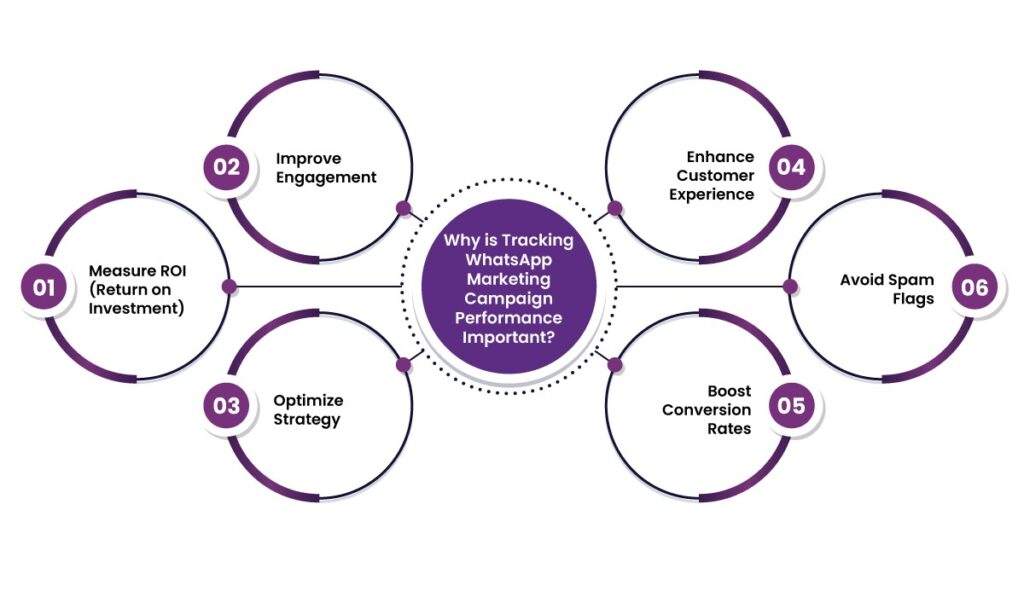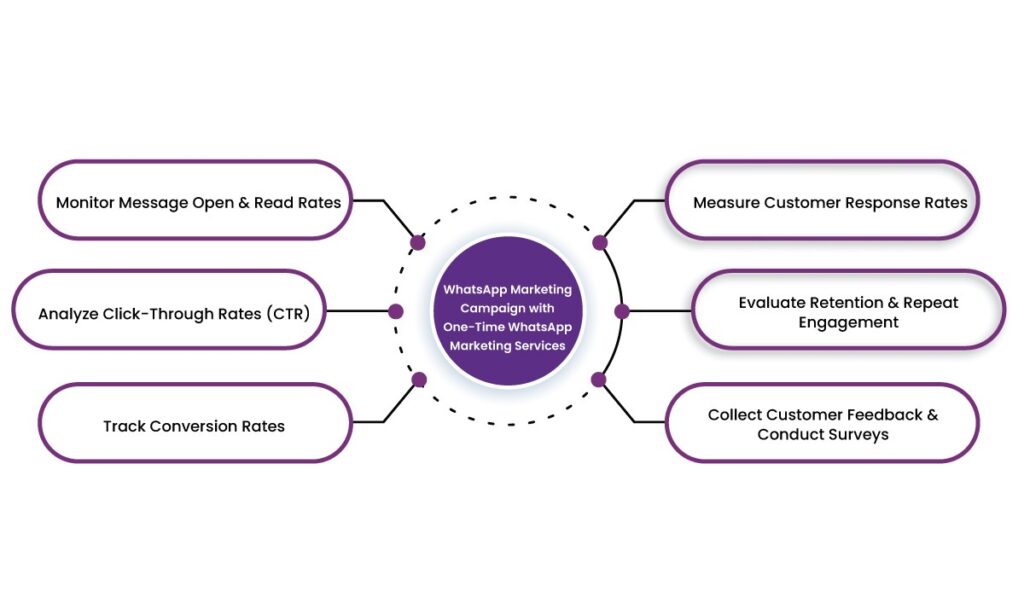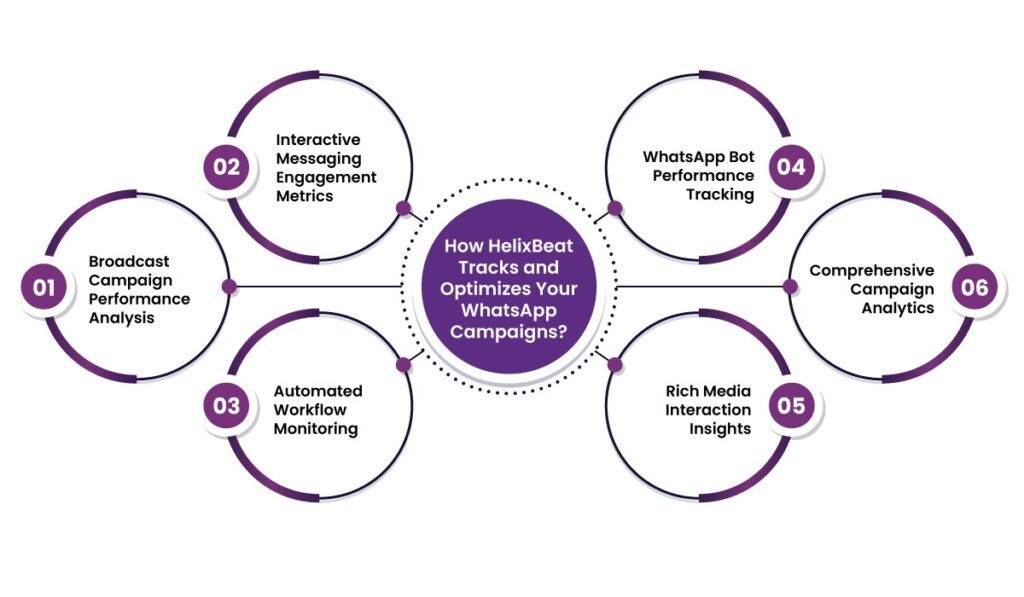Table of Contents
Introduction
Did you know that over 2 billion people actively use WhatsApp every month, making it one of the most powerful marketing tools? Yet, 80% of businesses fail to track their WhatsApp marketing performance effectively. Imagine sending out thousands of messages and having no clue whether they’re reaching the right audience, converting leads, or engaging customers. Sounds like shooting in the dark, right?
Tracking your WhatsApp marketing campaign with right whatsapp marketing services is the key to unlocking its full potential. By analyzing metrics like open rates, response times, and conversions, you can refine your strategy, improve engagement, and drive better ROI. But where do you start? Don’t worry!
In this blog, we’ll walk you through why tracking is essential, top methods to do it from a WhatsApp marketing agency, and how Helixbeat’s WhatsApp marketing services can help you maximize your campaign success. Let’s dive in!
Why is Tracking WhatsApp Marketing Campaign Performance Important?
Tracking your WhatsApp marketing campaign isn’t just about measuring numbers—it’s about optimizing engagement, improving conversions, and ensuring compliance with WhatsApp’s policies. Below are six key reasons why performance tracking is crucial, along with real-time examples from whatsapp marketing services.
1. Measure ROI (Return on Investment)
Every marketing effort comes with a cost—whether it’s your time, messaging fees, or paid promotions. Tracking your campaign’s performance helps you determine if your investment is paying off.
Real-Time Example:
Imagine a clothing brand, StyleWear, launching a WhatsApp marketing campaign for their new summer collection. They send promotional messages to 10,000 customers, offering a 15% discount for purchases made via WhatsApp.
By tracking:
- How many users clicked on the product links (using UTM codes)
- How many redeemed the discount code
- The total revenue generated from WhatsApp orders
StyleWear can calculate whether the campaign was profitable or if adjustments are needed to improve future performance with excellent WhatsApp marketing services.
2. Improve Engagement
Engagement metrics like open rates, response rates, and time spent on chat reveal how customers interact with your messages. Understanding these insights helps businesses craft more engaging content.
Real-Time Example:
A fitness center sends out personalized workout reminders and diet tips to clients via WhatsApp. They notice that video messages (quick workout demos) get a 70% higher response rate than plain text messages. Based on this insight, they shift to more video-based content, leading to higher engagement and customer retention.
3. Optimize Strategy
Not every message format or strategy will work for all audiences. Tracking which content performs best allows businesses to refine their approach and focus on what resonates most.
Real-Time Example:
An e-commerce business runs A/B testing by sending:
- Message A: A simple product announcement with a text description
- Message B: A product image with a short promotional video
After analyzing engagement rates, they find that Message B has a 40% higher click-through rate. This data-driven approach helps them optimize future campaigns by focusing more on multimedia content.
4. Enhance Customer Experience
Understanding customer preferences allows businesses to personalize interactions and offer a better user experience.
Real-Time Example:
A travel agency, GoWander, uses WhatsApp for customer inquiries. By tracking chat response times, they realize that customers tend to drop off if they don’t receive a reply within 5 minutes.
To improve customer experience, they:
- Implement an AI chatbot for instant replies
- Set up auto-responses to inform customers of expected wait times
- Train agents to prioritize high-intent leads
This leads to a 30% increase in booking confirmations via WhatsApp.
5. Boost Conversion Rates
Tracking what drives customers to take action—whether it’s making a purchase, signing up for a webinar, or scheduling a service—helps refine strategies for better conversion rates.
Real-Time Example:
A real estate agency runs a WhatsApp marketing campaign to generate leads for luxury apartments. They send:
- Message 1: Basic property details with a website link
- Message 2: Personalized video walkthroughs and an option to schedule a free consultation via WhatsApp
After tracking engagement, they find that Message 2 led to a 25% higher consultation booking rate, proving that video content and direct interaction boost conversions.
6. Avoid Spam Flags
WhatsApp has strict guidelines to prevent businesses from spamming users. If too many recipients block or report your messages, your number can be flagged or banned. Tracking delivery rates and responses helps ensure compliance and maintain a good sender reputation.
Real-Time Example:
A food delivery service sends out mass promotional messages to users every day. Within a week, they notice that 30% of recipients unsubscribed, and their message delivery rate dropped.
By analyzing the issue, they realize:
- They were sending too many messages (customers felt spammed)
- The promotions were not personalized
To fix this, they:
1. Reduce messages to twice a week
2. Segment customers and send personalized offers based on order history
As a result, unsubscribe rates drop by 50%, and engagement improves

6 Simple Ways to Track the Performance of Your WhatsApp Marketing Campaign with One-Time WhatsApp Marketing Services
Usually, a WhatsApp marketing agency tracks performance using six key methods: message open rates, response rates, conversion tracking, engagement analytics, customer feedback, and A/B testing. Every WhatsApp marketing agency refines strategies using these insights.
1. Monitor Message Open & Read Rates
One of the easiest ways to track performance is by checking open rates and read receipts on WhatsApp. If your audience is not opening or reading your messages, it may indicate that your messaging strategy needs improvement.
How to Track:
- Use WhatsApp Business API or WhatsApp Business App to check double grey ticks (delivered) and blue ticks (read receipts).
- High open rates indicate effective message delivery, while low open rates suggest your messages aren’t resonating with the audience.
2. Analyze Click-Through Rates (CTR)
Click-through rate (CTR) helps you understand how many users are clicking on the links you share via WhatsApp messages.
How to Track:
- Use UTM parameters in the links and track them via Google Analytics.
- Shorten URLs using tools like Bit.ly or Rebrandly and monitor clicks.
- If your CTR is low, consider optimizing your CTA (call-to-action) or making your messages more engaging.
3. Track Conversion Rates
Conversion rate tracking is crucial in measuring how many users take the desired action after receiving your WhatsApp messages.
How to Track:
- Set up Google Analytics or Meta Pixel to track conversions from WhatsApp.
- Monitor the percentage of users who complete actions like making a purchase, signing up for a newsletter, or filling out a form.
- If your conversion rate is low, you may need to refine your WhatsApp marketing strategy.
4. Measure Customer Response Rates
Response rate is the percentage of people who reply to your messages. A high response rate means your messages are engaging and relevant to your audience.
How to Track:
- Compare the number of responses vs. the number of messages sent.
- Use CRM tools that integrate with WhatsApp (like HubSpot, WATI, or Salesforce).
- A low response rate may indicate that your messages are too promotional or not personalized enough.
5. Evaluate Retention & Repeat Engagement
Keeping track of customer retention and repeat interactions can help measure long-term campaign effectiveness.
How to Track:
- Use WhatsApp analytics tools to monitor how many users re-engage with your business.
- Track repeat customers using a CRM tool integrated with WhatsApp.
- High customer retention means your WhatsApp marketing strategy is working effectively.
6. Collect Customer Feedback & Conduct Surveys
Getting direct feedback from your audience helps you understand how your campaign is perceived and what improvements are needed.
How to Track:
- Send WhatsApp surveys using Google Forms, Typeform, or WhatsApp Business API.
- Ask for ratings, reviews, and testimonials post-interaction.
- Analyze feedback to improve future campaigns

How HelixBeat Tracks and Optimizes Your WhatsApp Campaigns?
1. Broadcast Campaign Performance Analysis
HelixBeat’s whatsapp marketing services enables businesses to track the delivery, open, and response rates of broadcast messages. This helps identify which promotions and updates resonate best with your audience.
2. Interactive Messaging Engagement Metrics
Our WhatsApp marketing services analyze customer interactions with surveys, quick replies, and response rates to refine messaging strategies, ensuring your audience stays engaged.
3. Automated Workflow Monitoring
HelixBeat’s WhatsApp marketing services provide real-time insights into automated messages such as reminders, follow-ups, and re-engagement campaigns. This helps businesses understand drop-off points and improve message timing.
4. WhatsApp Bot Performance Tracking
Our platform monitors chatbot interactions, response accuracy, and user satisfaction to optimize automated customer support and lead nurturing.
5. Rich Media Interaction Insights
Track engagement with videos, images, and documents, ensuring your multimedia content enhances customer experience and drives conversions.
6. Comprehensive Campaign Analytics
HelixBeat’s WhatsApp marketing services provide a custom dashboard to track:
- Message delivery & open rates
- Click-through rates (CTR) on shared links
- Customer response & conversion rates
- Retention & re-engagement metrics

Final thoughts
Tracking your WhatsApp marketing campaigns isn’t just about crunching numbers—it’s about understanding what works, what doesn’t, and how to keep your audience engaged. By monitoring key metrics like open rates, response times, and conversions, you can fine-tune your strategy for maximum impact. And if all this sounds overwhelming, don’t worry!
HelixBeat’s WhatsApp Marketing Services make it easy with real-time analytics, automation tools, and AI-powered engagement tracking to optimize your campaigns effortlessly. So, why guess when you can track and improve? Start measuring your success today with HelixBeat’s WhatsApp marketing agency, and watch your WhatsApp marketing drive real results!
Customer also ask
1. How can WhatsApp marketing services help businesses improve customer engagement and drive sales?
WhatsApp marketing services enable direct and personalized communication with customers, improving engagement through instant responses, automated messages, and interactive content. Businesses can drive sales by using WhatsApp for promotions, customer support, and abandoned cart reminders, leading to higher conversion rates.
2. How do I measure the success of WhatsApp marketing campaigns?
The success of a WhatsApp marketing campaign can be measured through key performance indicators (KPIs) like message open rates, response rates, click-through rates (CTR), conversion rates, and customer retention metrics.
3. Is it possible to track the success of bulk WhatsApp marketing campaigns?
Yes, tracking bulk WhatsApp campaigns is possible using analytics tools that measure delivery rates, open rates, engagement levels, link clicks, and conversion rates. Businesses can also monitor customer interactions and feedback for insights.
4. What are the key metrics to track the success of a WhatsApp ad campaign?
Key metrics include:
- Message Open Rate – Percentage of messages opened by recipients.
- Response Rate – Number of replies received.
- Click-Through Rate (CTR) – Percentage of users clicking on links.
- Conversion Rate – Number of users taking desired actions (purchases, sign-ups).
- Customer Retention Rate – How well customers stay engaged over time.
5. What are the key metrics to track when evaluating the success of a digital marketing campaign aimed at monetization?
For monetization-focused campaigns, key metrics include:
- Return on Investment (ROI) – Revenue generated versus campaign cost.
- Cost Per Acquisition (CPA) – Expense incurred to acquire a customer.
- Customer Lifetime Value (CLV) – Predicted total value a customer brings.
- Conversion Rate – Percentage of leads turning into paying customers.
- Average Order Value (AOV) – The average spend per customer transaction.
6. What are the key metrics and KPIs that should be tracked to measure the success of a digital marketing campaign?
Essential KPIs include:
- Website Traffic – Number of visitors and their behavior.
- Engagement Rate – Interactions on ads, posts, or messages.
- Lead Generation – Number of new potential customers acquired.
- Bounce Rate – Percentage of users leaving without engagement.
- Sales & Revenue Growth – Direct impact on business profits.














